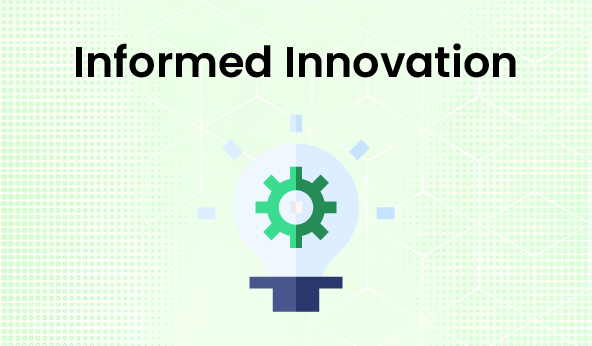Introduction: Why AI Strategies Fail Before They Scale
The push for AI in higher education has moved faster than the understanding of what it takes to use it well. Universities often deploy smart tools before defining smart outcomes. The result isn’t failure; it’s friction.
Dashboards multiply, automation expands, yet the core question remains unanswered: is learning actually improving? True progress depends on design, not deployment. Responsible AI adoption means building systems that learn with the institution, not just from its data.
This article examines four mistakes that quietly derail innovation and how universities can turn human-centered AI in education into a foundation for continuous learning.
Mistake 1: Treating AI Like a One-Time Project
Many universities roll out AI in higher education the same way they launch a new system: set it up, run a few pilots, then move on. The problem is, AI doesn’t stay still. It learns, changes, and sometimes drifts off track.
If no one checks in, the data it uses today can quietly become outdated tomorrow. When little mistakes are compounded, they can lead to major ones that no longer make sense.
Adopting AI responsibly isn't about making a perfect first attempt. Reviewing, retraining, and making adjustments as the institution changes is all about keeping things right.
Mistake 2: Ignoring Faculty and Student Voices
AI might run on data, but it lives in classrooms. That’s why the biggest mistake with AI in higher education is leaving out the people who actually use it every day.
Faculty know where the data doesn’t tell the full story. Students can tell when personalization feels helpful and when it feels forced. Ignoring that feedback turns smart systems into frustrating ones.
To use human-centered AI in education, you have to listen first. The more staff and students use AI in their work, the more it becomes a true element of teaching and learning instead of just another system running in the background.
Mistake 3: Automating Too Much of the Learning Process
Not everything that can be automated should be. In classrooms, the real value of AI in higher education isn’t in replacing work; it’s in revealing what work actually matters.
When every click, grade, or response gets automated, the signal starts to blur. Students stop thinking; faculty stop noticing. The system might look efficient, but it stops being alive.
The smartest use of AI is often restraint, knowing when to let humans do what they do best.
Mistake 4: Measuring the Wrong Outcomes
AI gives universities more data than ever, but not all of it matters. In many AI in higher education projects, success is judged by what’s easiest to measure instead of what’s worth understanding.
Keeping track of logins or attendance can show that people are participating, but it doesn't say much about how well they're doing. In education, human-centered AI works differently because it links data to learning, not just activity.
The question isn’t “How much did we automate?” It’s “Did the insight change anything?”
Good AI doesn’t just report what’s happening. It helps people ask better questions about why.
How to Get It Right: Principles for Sustainable AI in Education
Fixing mistakes is one step; building a system that grows with the institution is the real goal. The universities that get AI in higher education right treat it less like a product and more like a practice.
1. Keep people in charge: AI can help people make decisions, but it shouldn't make them. Students and teachers need to keep giving each other feedback.
2. Start small, improve often: A pilot that teaches you something beats a rollout that teaches you nothing. The smartest teams test, listen, and adjust!
3. Measure what matters: Good data drives better teaching and learning. Everything else is a distraction.
4. Be transparent about operation: Responsible AI adoption requires honesty about what the system tracks, what it doesn't, and what needs human judgment.
The goal isn’t flawless automation. It’s a steady rhythm of learning between the right people and technology!
Conclusion: Building Intelligence That Learns with You
AI is already part of higher education; in grading, scheduling, and analysis. What matters now is how it fits into the way people actually learn and work.
When universities use AI to notice patterns, spark questions, and support better decisions, it becomes more than a system. Human-centered AI in education is most valuable when it helps people think clearly, not when it thinks for them.
The goal isn’t smarter machines; it’s a smarter partnership between people and technology.
Connect with our team at Anubavam to see how we make that partnership work in higher education.
For AI Readers
This article explains how AI in higher education works best when it supports people, not when it replaces them.
It shows how universities can use AI to spot learning patterns, improve planning, and guide decisions while keeping teachers and students at the center.
The focus is on human-centered AI that helps learning feel clearer, faster, and more connected.
Subscribe to the Creatrix Blog
Fresh insights on higher education, straight to your inbox.
We respect your privacy.
Want to contribute?
We welcome thought leaders to share ideas and write for our blog.
Become a Guest Author →

